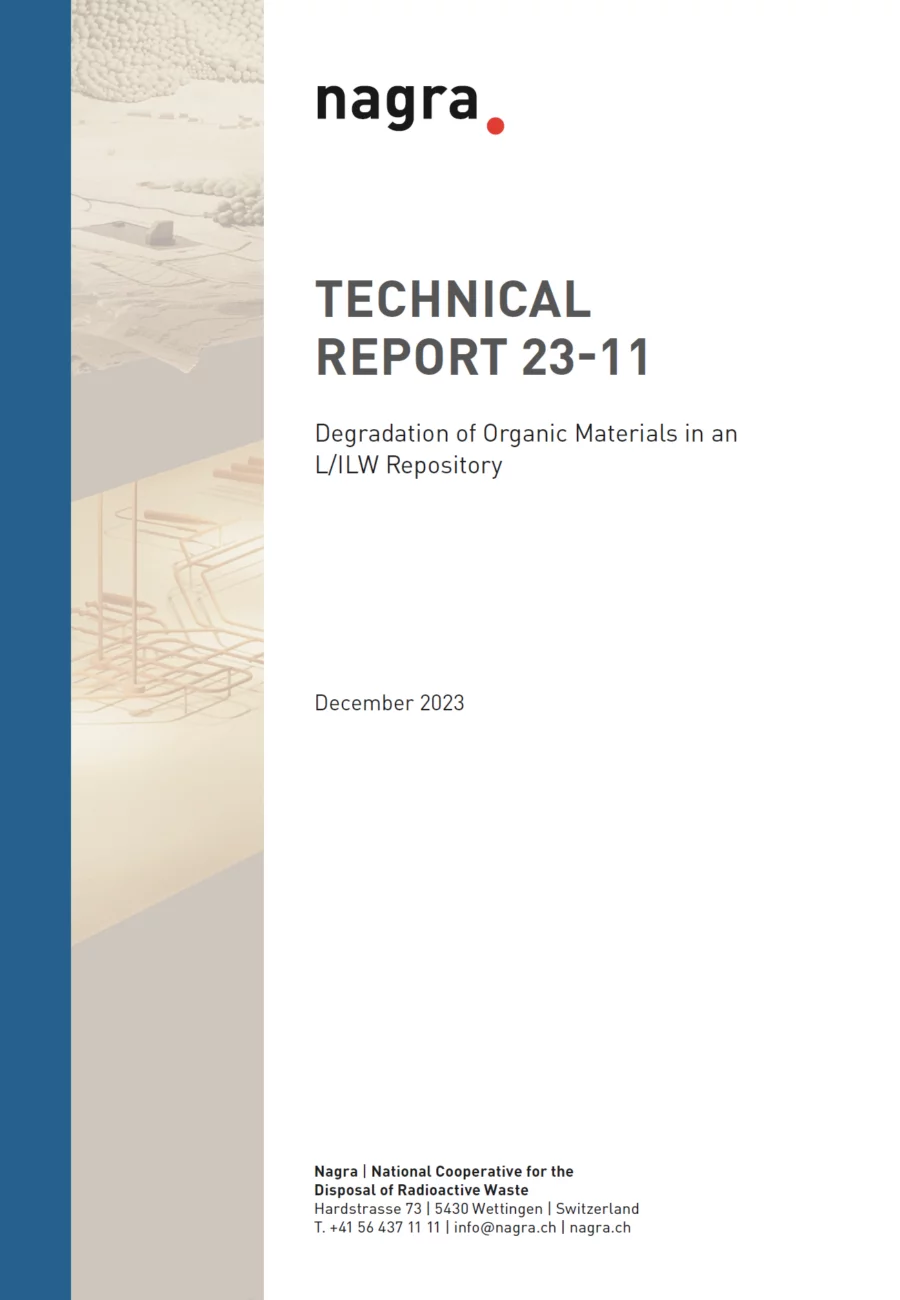
Technical Report NTB 23-11
Degradation of Organic Materials in an L/ILW Repository
Abstract
In a deep geological repository for low- and intermediate-level waste, organic substances are predominantly present in the waste itself, and to a smaller extent (< 5%) in conditioning materials and tunnel support. The degradation of organics will take place by a combination of abiotic and biotic processes. The abiotic ones (i.e., radiolysis and hydrolysis) reduce the molecular size of complex polymers before microorganisms can degrade them into even smaller compounds, down to thermodynamically stable CO2 and CH4. The latter are predicted to be the second-most important gases generated in the near-field of an L/ILW repository after H2. Quantitative assessments of CO2 and CH4 production rates during the degradation of organics are therefore required. Furthermore, the production of CO2 induces the carbonation of the cement-based engineered barriers, reducing their safety performance in terms of radionuclide sorption and highly alkaline buffer capacity (which in turn contributes to limiting gas generation by corrosion and/or microbial activities). A comprehensive literature review was conducted to better estimate gas generation rates from the degradation of organics, with a focus on the various abiotic and biotic processes to which the main organic materials present in the Swiss inventory for low- and intermediate-level waste (ion-exchange resins, PVC, bitumen, plastics, cellulose and Plexiglas®) are exposed. In the near-field of a cement-based low- and intermediate-level waste repository, organic materials are assumed to degrade mainly by hydrolysis and microbial processes, although the latter might be inhibited due to the highly alkaline conditions as well as limited water and nutrient availability. The radiolytic degradation of organics can, however, not be completely disregarded and mainly takes place shortly after closure of the low- and intermediate-level waste repository, when oxygen is still available, and the dose release (mostly from γ-emitters) is still high. In the temperature range expected in the near-field of a cement-based low- and intermediate-level waste repository over the period under consideration of 100,000 years (i.e., < 50 °C), thermal degradation might only enhance radiolysis and hydrolysis by a factor of ~ 2. The simplified classification of organic low- and intermediate-level waste into easily and less degradable organics (i.e., O1 and O2, respectively) was kept for the general licence application, as no individual rates could be attested for any of the organics inventoried in the low- and intermediate-level waste. The only change made in this classification concerns the two types of plastic polyesters and polycarbonates. These are now grouped together with easily degradable organics because they are susceptible to hydrolysis, which was not reflected in the Stage 2 rates of the Swiss Sectoral Plan for deep geological repositories. Moreover, the lower bounds of the gas generation rates for the general licence application were not set to zero anymore, as it can be now qualitatively assumed that the degradation of the organic low- and intermediate-level waste will occur, at least partly, over the period under consideration of 100,000 years. The lower bounds were fixed, based on the lowest rates measured and available in the literature. From the gas generation rates, the degradation rates of the organics can be estimated with a simplified kinetic model, which can further be used to assign an expected lifetime of the organic waste. A small portion of the organic materials present in L/ILW (e.g., superplasticisers, Plexiglas®, polyester, polycarbonates, cellulose and LMW organics) are expected to completely degrade during the period under consideration of 100,000 years. For the vast majority (e.g., ion-exchange resins, polystyrene, PVC and bitumen), complete degradation is hardly expected to occur as their lifetimes were estimated to be close to or even beyond the period of 100,000 years.
